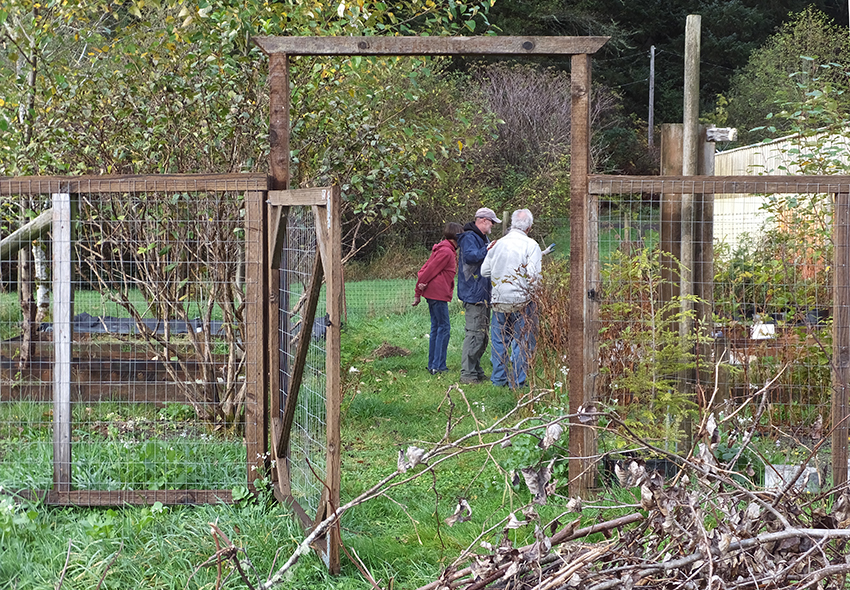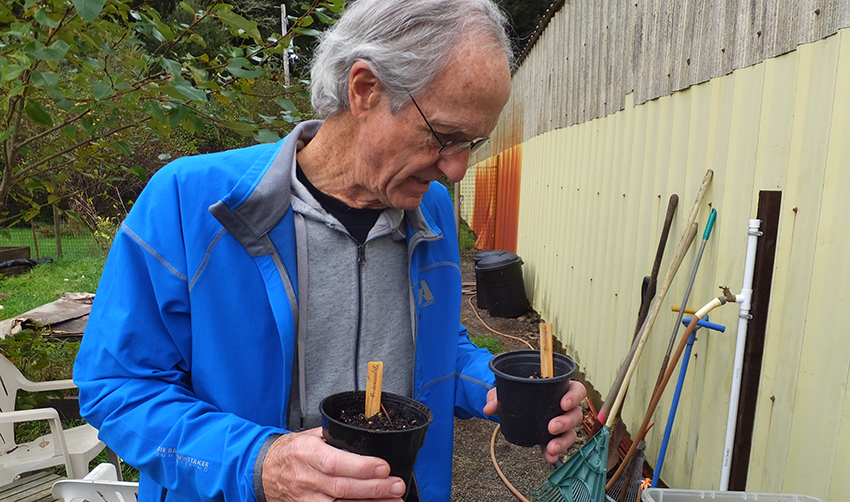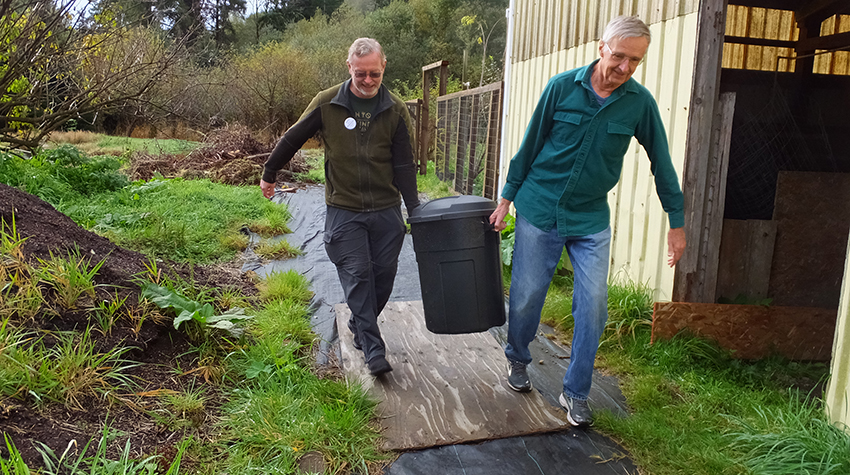By NCLC supporter and volunteer Pat Wollner
Sometimes you reach a time in your life when you start to wonder, “What should I do today?” or “Why bother getting up?” or maybe even “What’s the point?” The kids are gone; actually even the grandkids are off to college. The house and yard are pretty much in shape even though you might not be, and the dog is happy with the usual walks. Sure, there are friends and family, traveling, volunteering, but like that old Peggy Lee song goes, “Is that all there is, my friend? Then let’s keep dancing …”
That’s about what was going through my head early last year, a dreary winter with lots of grey days, and I was feeling kind of useless. I found myself attending a lecture in Manzanita, part of the Art of Aging & Dying series, and the February meeting dealt specifically with the topic “What’s next?” I come from a very long-lived family; my father was well over 104 when he died. How to live a long time wasn’t so much the concern for me but rather, how do I live well for those next 30 years?
In order to address that question, the moderator of the lecture asked for a volunteer to demonstrate how brainstorming can sometimes reveal untapped resources within each of us that can help guide our lives. I raised my hand and went to the platform where, for more than a half-hour, the audience quizzed me about what I was currently involved in, what made me happy, what made me mad, what was my career background, what were my dreams, and on and on. The moderator wrote everything down on a kind of chart with overlapping circles, lines pointing this way and that, and lists of words, and ultimately she came up with what turned out to be a surprising conclusion. It seemed that what I really wanted to do was make something new out of something old and forgotten. Apparently I was eager to create a garden at Circle Creek Conservation Center. As an active North Coast Land Conservancy volunteer, I was already a frequent visitor to Circle Creek; I just had never thought of taking on this particular project.

BEFORE: The garden entrance and weedy raised beds beyond.
A few days later I asked a friend to meet me out at the Circle Creek barn. I laid out the chart that the group had generated, with all of its circles, connections, words, thoughts, and conclusion. He thought it sounded like an interesting idea. Being a gardener himself with many years of experience creating his own garden of native plants in Portland, Jeff Roehm was the ideal person to help me figure out if this was something reasonable or if, as it felt to me, it was a weird idea that nobody would take seriously. Plus I had no experience in real gardening. He encouraged me to think it through and come up with a plan, then present it to Stewardship Director Melissa Reich for approval. She essentially said, “Why not? Go for it.”

AFTER: The new garden gate (thank you, Vern!) and weeded planting beds back in use. That’s Penny Abegglen and David Sinclair visiting with Neal Maine.
According to Neal Maine, who helped found NCLC, the garden space had been developed many years ago with money from a grant secured by a watershed council as a potential place to store and grow plants. Out behind what we call the stewardship barn were eight raised beds and an overhead sprinkler system; at one time the entire area was neatly covered with landscape cloth and pea gravel and enclosed in a post-and-mesh fence. Now, however, it was a mass of weeds, overgrown trees, and nursery stock gone wild. The fence was tattered and the gate was leaning badly, propped up by a post and tied closed with a piece of wire. Time, staff, money, all had been in short supply, and it wasn’t a priority for the developing land trust. I didn’t know where to start except to ask for ideas and suggestions, and it seemed a monumental task. In March, though, after getting permission from Executive Director Katie Voelke and the gang, I started weeding.

Lora VanNortwick
Along the way other volunteers stepped up and helped in wonderful ways. One of the first was Vern Montgomery. He was working last summer with the Wednesday Weed Warriors and coming for other stewardship days as well. As we talked over Scotch broom one day, I learned that he was a gardener, so I started telling him about our project. He eventually started working out there. Before he moved to Kansas late that summer he built a new fence and gate from materials he’d salvaged from the barn. Lora VanNortwick, a master gardener who works in Seaside, lent a hand weeding some of the raised beds. She and Patte Fenderson began sorting the old, dead nursery plants and saving their potting soil. Cheryl Conway spent much of a day weeding paths and beds and reorganized the stash of used pots that were collecting behind the barn. Then I snagged my nephew Michael Bell and my grandson Bryce Hege and another volunteer, Linda Ferguson. Little by little, over the year, it started to take shape. My brother, Doug Bell, who was building a woodshop in the stewardship barn, repaired some broken pipes so we could have irrigation available. Most recently Ann Barnes has stepped in as the alternate watering person when others aren’t available.

Patte Fenderson
Throughout the year, Jeff has continued to inspire us with the vision of starting and raising native plants to use on various NCLC properties or simply to demonstrate the plants that thrive in the coastal environment we steward. He has brought examples from his own native plant collection to the nursery. He made the hypertufa pots we’re using, and he teaches others how to make them. He regularly collaborates with all of us to make it work.

Jeff Roehm
This is now the reason I get up in the morning. The project is by no means finished; it never will be. I’m not even sure what it’s going to look like next month, let alone next year. It doesn’t matter. The ideas will grow just like the native plants, and the volunteers will keep on coming.

Frank Erickson and Vaughn Martin haul a garbage can full of salvaged potting soil from the garden to the barn, where it was used to make seed bombs for the coastal prairie (and in the garden itself).
So let’s keep dancing.
Pat and Jeff are leading a tour of the native plant garden and a make-your-own-hypertufa pot workshop at Circle Creek on Tuesday, June 18; $10 covers the cost of materials. Registration is open now.

Starting Henderson’s checkermallow (Sidalcea hendersonii) at the garden in February
Comments